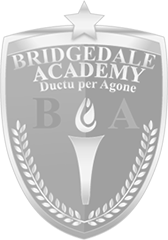How can a youth hockey player "guarantee" his own success?
by Mike McPartlin, Headmaster, Bridgedale Academy
What kind of mindset does a player need to realize his full potential?
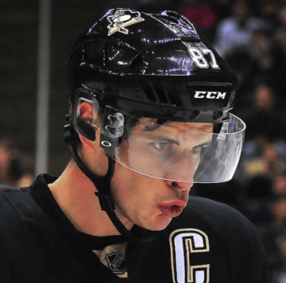 The burden of doing what is necessary to an athlete's development falls squarely on the shoulders of the individual athlete.
The burden of doing what is necessary to an athlete's development falls squarely on the shoulders of the individual athlete.
Parents indeed do play a crucial role when the athlete is younger. But ultimately it is up to the athlete to do what he must to turn his potential into reality.
To do this the athlete must develop a certain mindset.
It is a mindset that will allow the player to do those 7 key things that "must" be done, i.e. for the player to eventually realize his full potential.
And ultimately, this mindset is dependent on what I'll call a "crucial understanding."
First I'll address the 7 "keys" ... and then the crucial understanding.
Here are the 7 Keys of a true hockey mindset:
-
Key#1: The player MUST make the necessary commitment to excellence
-
Key#2:The player MUST do the necessary training along the way
-
Key#3: The player’s training MUST be goal-oriented and purposeful
-
Key#4: The player’s training MUST be both physical and mental
-
Key#5: The player’s training MUST be habitual
-
Key#6: The player MUST stay focused on his goals
-
Key#7: The player MUST be disciplined and avoid distractions
Let’s look at each separately:
-
Key#1: The player must make the necessary commitment to excellence
This is the most important “key” of all. And it is the most elusive.
 All players have dreams about becoming a great player. Most even dream, at some point, of playing in the NHL. And most will even say out loud that they are determined to get to the next level.
All players have dreams about becoming a great player. Most even dream, at some point, of playing in the NHL. And most will even say out loud that they are determined to get to the next level.
But having dreams, or saying how determined you are, is not what we’re talking about.
The type of commitment we're talking about is nearly always life-changing. It compels the player to follow through on it by taking action, and by being consistent in taking action so that good habits become ingrained.
Note that, although rare, sometimes even very young children will make this kind of commitment and follow through on it resolutely. It is the proverbial youngster who has “flipped his switch,” and who then is willing to go through years of development with both maturity and confidence.
(This maturity and confidence are part of the "crucial understanding" that a proper mindset is based on. This is discussed below.)
One important caveat: only the player himself can flip his own switch.
A parent, coach, friend or teammate cannot do it for him, no matter how much they might wish they could.
-
Key#2: The player must do the necessary training along the way
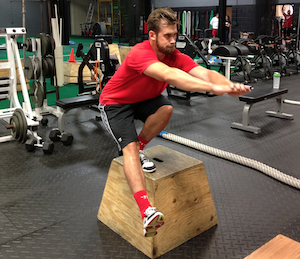 The toughest challenges to a player who makes such a commitment to excellence come later.
The toughest challenges to a player who makes such a commitment to excellence come later.
Because his commitment level will be surely be tested along the way. Will the player go through his workout even though his training partner can’t make it that day? Will he stick to his training schedule, even though some friends are going to a party?
A player who has truly flipped his switch will stay the course.
-
Key#3: The player’s training must be goal-oriented and purposeful
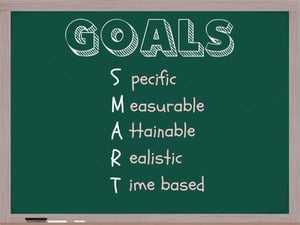 The training cannot be haphazard. It must be structured and have a purpose. The player should set reasonable goals and then train purposefully each day to move his development along toward achieving each goal.
The training cannot be haphazard. It must be structured and have a purpose. The player should set reasonable goals and then train purposefully each day to move his development along toward achieving each goal.
Malcolm Gladwell’s best-seller “Outliers” goes into detail about how important it is that training be purposeful. And it only makes sense.
And of course it can be very helpful, most would say even necessary, for the player to have at least some guidance from a professional trainer along the way.
-
Key#4: The player’s training must be both physical and mental
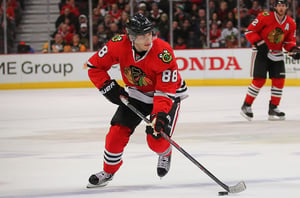 Developing Game Sense:
Developing Game Sense:
The best athletes in the world possess not only great physical skills and attributes, but also great in-game vision and game-sense.
In hockey, it is the ability to instantly recognize situations as they occur during the course of the game, and then quickly make good decisions in response.
Decision-making is an area in which coaches can help, e.g. by pointing out things to look for when reading in-game situations. But ultimately, these “thinking” skills too the players must “learn by doing” and so develop on their own.
And the younger these decision-making skills are developed, the better.
 Poise Under Pressure:
Poise Under Pressure:
It is also true that the very best players also exude an almost eerie calmness when under pressure in competitions.
Many studies have been made trying to understand this characteristic, and in most of them at least some credit is given the athlete’s use of visualization, a mental skill that most believe can be developed.
There are many books and articles that discuss the process of visualization and how often top athletes use it. Here's a link to one such article: Visualization Techniques for Athletes.
-
Key#5: The player’s training must be habitual
In a way this is a combination of doing the necessary training and having it be goal-oriented and purposeful. But the bottom line is that the player should be consciously striving to develop the types of life habits that are beneficial for an athlete.
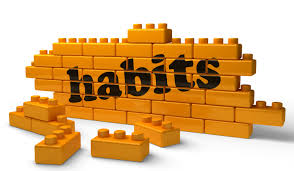 He should, for example, be in the habit of eating healthy food and avoiding junk food. He should always get enough sleep to allow for recovery, etc.
He should, for example, be in the habit of eating healthy food and avoiding junk food. He should always get enough sleep to allow for recovery, etc.
The value of developing good habits is undeniable. (Aristotle, the greatest of the ancient Greek philosophers, wrote about the importance of good habits, regarding them as crucially important to living a good life.)
-
Key#6: The player must stay focused on his goals
 Periodically, and often, the athlete should reaffirm to himself exactly why he is doing his training. Keeping a log of training exercises and reps is always valuable. And so is keeping a chart to evaluate his progress along the way.
Periodically, and often, the athlete should reaffirm to himself exactly why he is doing his training. Keeping a log of training exercises and reps is always valuable. And so is keeping a chart to evaluate his progress along the way.
Setbacks and disappointments happen. The athlete must keep his focus in spite of the inevitable disappointments that will occur along the way.
-
Key#7: The player must be disciplined and avoid distractions
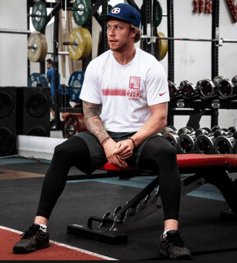 This could fit under the key of “stay focused,” but it encompasses more. The distractions an athlete needs to avoid usually come away from the rink or the gym.
This could fit under the key of “stay focused,” but it encompasses more. The distractions an athlete needs to avoid usually come away from the rink or the gym.
When the player is where he is supposed to be and doing what he is supposed to do, he is usually okay.
This means a serious athlete will avoid situations where stupid or unhealthy activities can or might happen. It means staying smart.
The "Crucial Understanding" at the foundation of the mindset
There's an almost cruel irony about the mindset necessary for a young hockey player to guarantee he'll achieve great things in hockey.
It goes back to the "maturity" and "confidence" required in the very first "key" discussed above, with respect to making the necessary commitment to excellence.
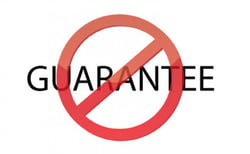 The maturity factor has to do with an understanding on the player’s part that there are no guarantees that he will realize his dream.
The maturity factor has to do with an understanding on the player’s part that there are no guarantees that he will realize his dream.
The only "guarantee" he must fully understand is that without such a commitment, he is guaranteed NOT to realize his full potential.
Understanding and respecting these realities requires maturity.
The confidence factor has to do with the player believing in himself and being willing, throughout the process, to abide by the commitment made.
And so the young player must resolve, with unusual maturity, to soldier on. And he must be confident he has made an honest commitment to do his very best ... and be willing to live with the results of his efforts.
To stay the course under these circumstances requires confidence.
Conclusion
It might as well be a law of nature that “the greater the thing you hope to achieve, the more you must give up in order to achieve it.”
 But it is a rare child who can either understand or appreciate that. And so it is up to his parents to make those decisions about what the youngster must give up in the interest of his future achievement. This is true generally in a youngster's life, and it is also true of course with respect to his development as a hockey player.
But it is a rare child who can either understand or appreciate that. And so it is up to his parents to make those decisions about what the youngster must give up in the interest of his future achievement. This is true generally in a youngster's life, and it is also true of course with respect to his development as a hockey player.
By the time a player is 16- or 17-years old, he will usually be fairly set in his ways.
If a player of that age is on track to fully realize his potential as a hockey player, then he will have already developed good habits. If, however, he is not yet on that path, getting on it can be a daunting challenge indeed.
And so, to best guarantee the athletic development of a youth hockey player, the goal should be getting the 10- and 11-year old players to start developing the types of good habits that will allow them to realize their potential when their time comes.
These youngsters should thus be doing the types of age-specific training that will lay a foundation of good habits that can be built on later. That’s what all the great ones did.
If this topic interests you and you would like to discuss it further, please click the button below so we can schedule a time to chat.





